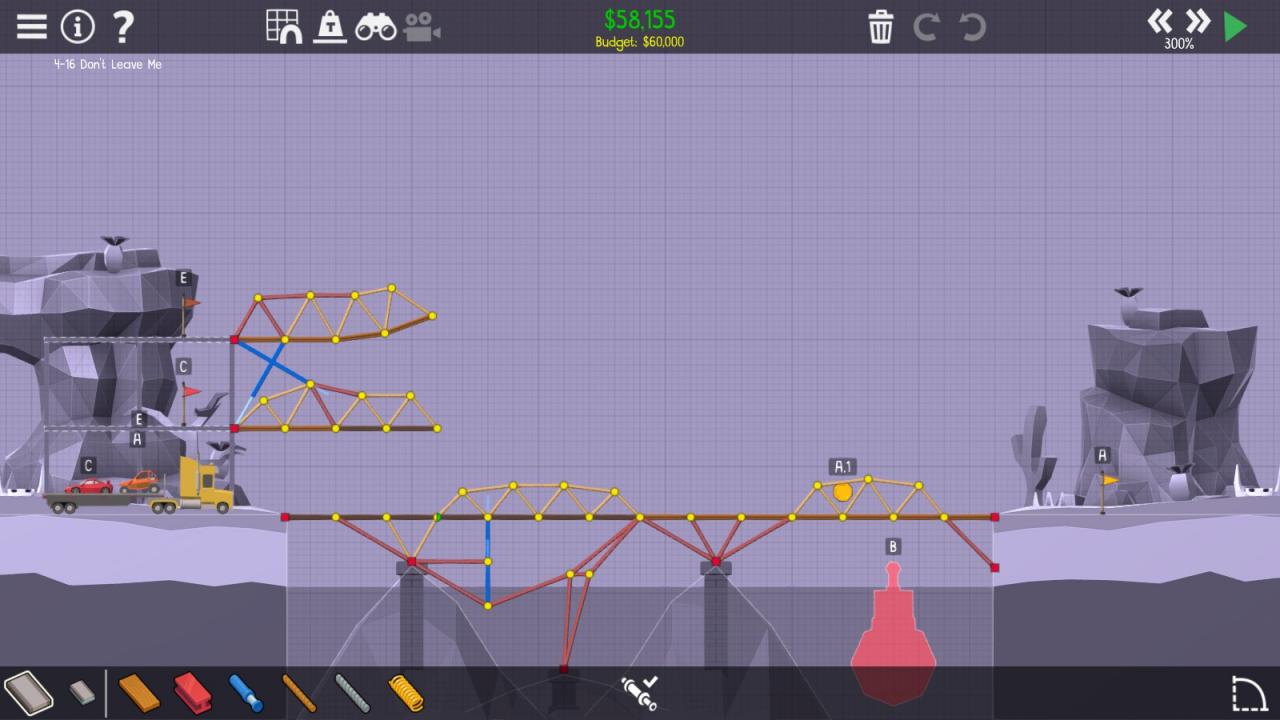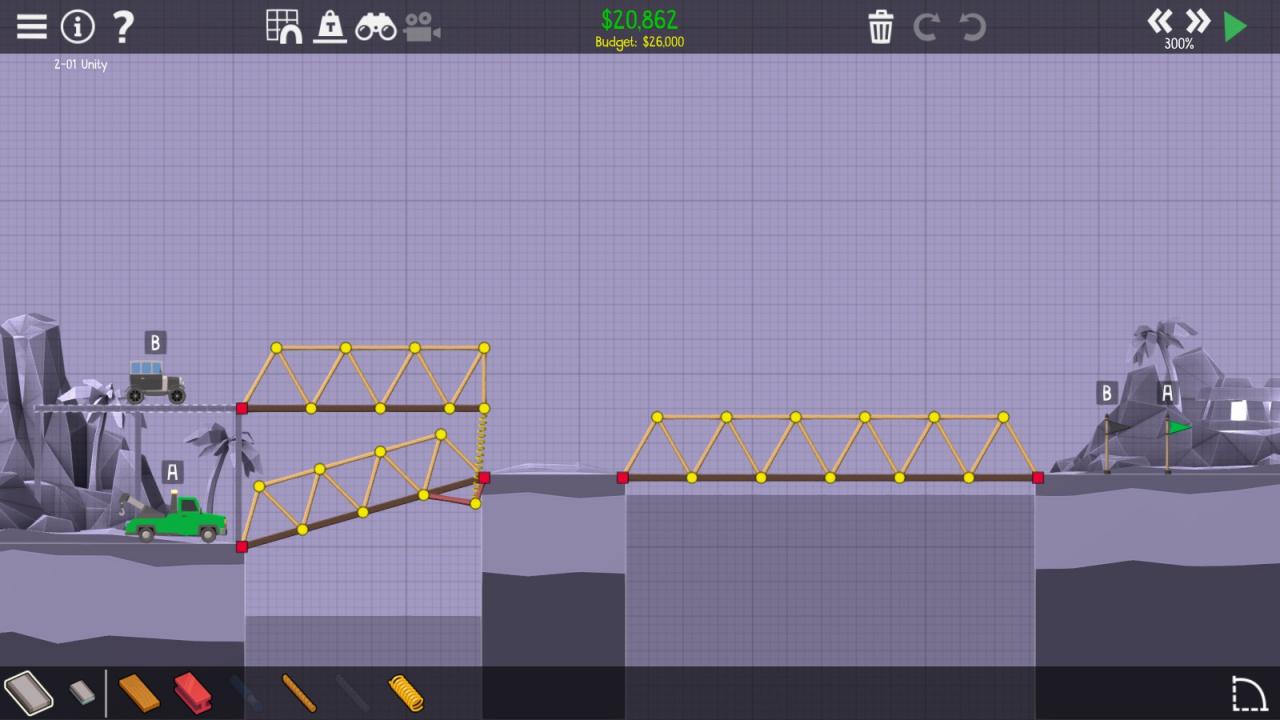

In the early 2010s, big-budget games, unable to move the action closer to the story, moved the story closer to the action. Image: Yager Development/2K Games Should violent video games narratively justify their obsession with violence? Guns make money.Ī scene from Spec Ops: The Line. At the end of the day, publishers decide which games get greenlit, and they answer to a board that expects profits.
#Poly bridge 2 budget cuts series
Designers who had worked on the BioShock series left to create Gone Home and The Blackout Club, a pair of games that retained the tension and mystery of their AAA predecessors, while showing the ways in which stories could bloom when guns got cut from the equation.īut for AAA studios, the allure of violence and its financial security was irresistible. Some indie game makers cut violent actions from their games altogether, leading to a spate of “walking simulators” like Dear Esther and Proteus, first-person games more interested in the space around the player rather than what they do inside that space. The challenge of ludonarrative dissonance never went away it just shifted from something critics discussed into a riddle many developers are still attempting to solve. The action would need to better align with the story.Īfter hundreds of blogs, Twitter threads, and essays published in what remained of game magazines at the time, critics tacitly agreed to never mention the words “ludonarrative dissonance” again, but here I am, breaking the blood oath.

To tell adult stories, they’d need more and better verbs. For a beat, game creators across the spectrum, from indie to AAA, appeared to have correctly diagnosed the problem.

#Poly bridge 2 budget cuts serial
The contrast between Drake the treasure hunter and Drake the serial killer was so stark that it became something more than a punchline.

(This actually aligns with the real history of treasure hunting, but the game never digs into that.) We encounter a dissonance between the story - fun treasure hunters - and the gameplay - white guy who travels to foreign lands and wholesale slaughters dozens, if not hundreds, of humans who stand in his way. The first time we control Drake, it’s to slaughter a couple dozen humans, setting the tone for the entire series. He hands a bonus gun to Elena, who has never handled a gun but, coincidentally, is a great shot. So he pulls out his old friend: a big-ass handgun. Drake explains they’re searching for treasure illegally. Elena suggests they contact the authorities. Except, the very first moment we meet him, he reveals his other talent: cold-blooded killing.ĭrake and his companion, journalist Elena Fisher, uncover a treasure in the middle of the ocean, only to be immediately surrounded by a fleet of pirate boats. Its protagonist, Nathan Drake, is a lovable, goofy treasure hunter. Uncharted: Drake’s Fortune, created by Naughty Dog - the same studio that went on to develop The Last of Us Part 2 - became one of the poster children of this bizarre moment, in which games aspired for bigger things while still bearing violent albatrosses of the shooter genre. Image: Naughty Dog/Sony Interactive Entertainment via Polygon The Last of Us Part 2’s studio helped launch the debate Nathan Drake holding an assault rifle in Uncharted: Drake’s Fortune. But they were still making games with the dominant “verb” of that generation and this one: shoot. You know, the types of stories that appear in award-winning films and books. But the core dilemma - How do game makers marry story and play? Should they even try? - never went away.īig-budget video game studios of the late 2000s wanted to tell serious, adult, and human stories. Like so many academic terms, it spiraled onto social media, losing its context, becoming a quick insult for violent games that aspired to be high art but fell short. The phrase became a buzzword, appearing in game developer panels and debated in video game writer listservs. Critics cited games like these as evidence that the medium was “growing up,” while also acknowledging that ludonarrative dissonance was the messy side effect of this flat-footed quest for maturity. This was the year BioShock and Uncharted debuted. After that, big-budget video games collectively calcified around its central dilemma. People were discussing this idea under different terms long before the phrase exploded in 2007, in part due to an oft-cited blog post by game designer Clint Hocking that used the phrase. The term references the disconnect between what players do in a video game ( ludo is Latin for “play”) and the story that the game tells (narrative). The Last of Us Part 2 punctuates one of the longest, strangest debates in video games: the 13-year discussion of ludonarrative dissonance.


 0 kommentar(er)
0 kommentar(er)
